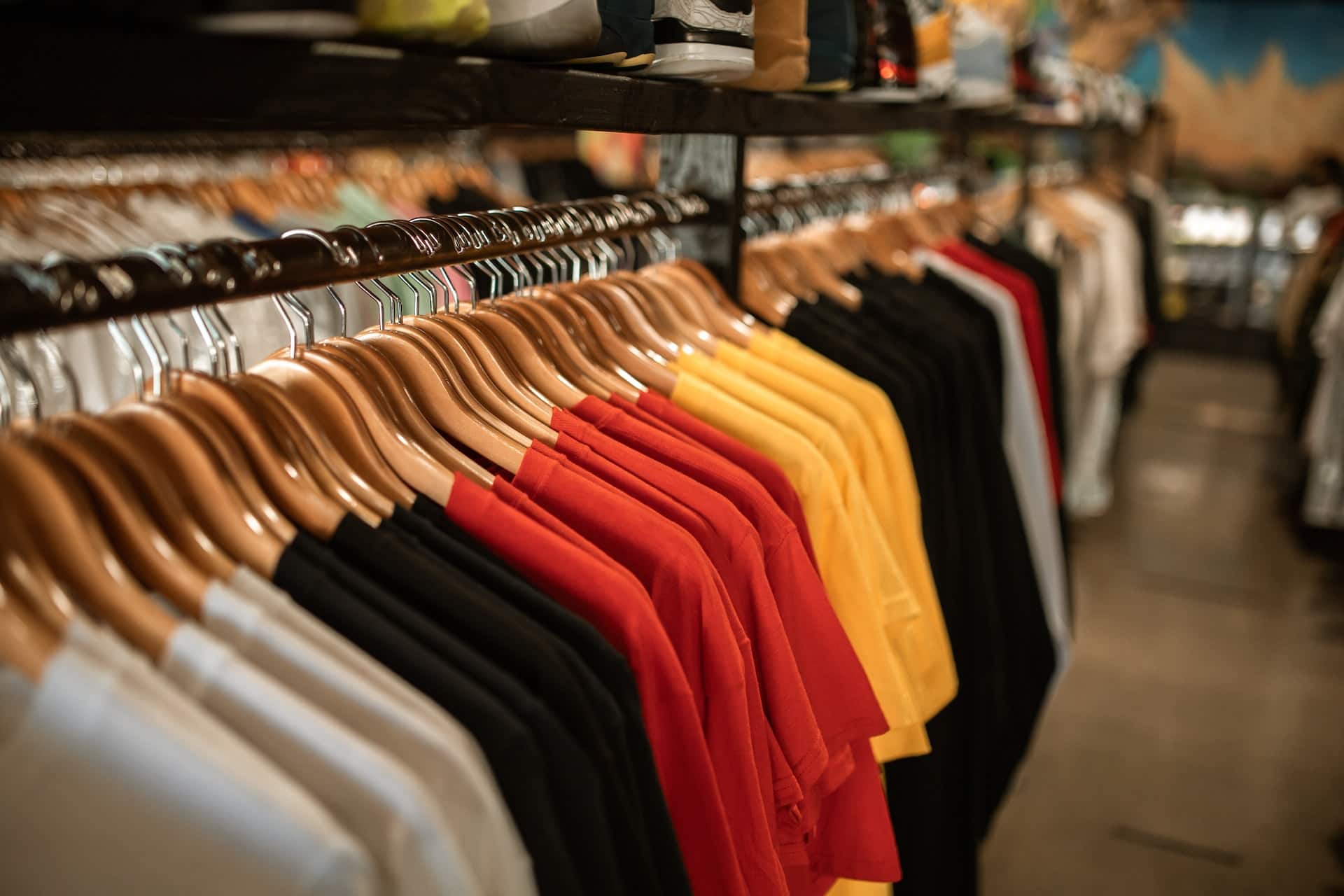DTG vs. Screen Printing: Determining the Best Method for POD Business

Mary Fedkovich, Client Manager in Multi-Programming Solutions • 7 min read
Whether you have possibilities and are willing to share design talents or realize customers’ ideas in an apparel line, you should consider the POD business and its types. We’ll describe the screen and direct-to-garment printing, their distinctions, strong and weak sides for various goals.
The article will reveal questions like quality, complexity, cost-effectiveness, and sustainability for each approach and tips on choosing what type will suit your enterprise the most.
Table of Contents
The main differences between DTG and screen printing
Criteria for choosing the type of printing
Eco-friendliness and demand for printing
What Is DTG Printing?
The way of transferring the image by spraying paint on the cloth is called direct-to-garment printing. It delivers detailed pictures with various halftones combinations, which makes them popular for customized wear creation. The fabric soaks ink, forming a colorful, durable illustration.
A DTG machine almost doesn’t require setup, which gives its owner an opportunity to create unique and diverse designs based on customers' orders. That allows a company to provide print on demand (POD) services and fulfill single purchases incoming from their own or partners’ online stores.
As soon as an end customer buys an item within a digital shop, the POD company receives a request and launches it into production. All it needs is a small bulk of white-label cloth and a variety of eco-friendly ink. A single layer of water-based paints creates the whole image, making the process relatively fast and exact.
The main advantage of DTG vs. screen printing is the creation of photorealistic pictures with many tiny details. The production almost has no limitations in possibilities to recreate any type of customized design with a broad color palette. Thus, a company can obtain individual projects and make stuff for special events, transfer personal photos, or copy well-known arts. These DTG features are a perfect solution for small POD business startups, customer base growth, and determining the most profitable niche for further company scalability.
What Is Screen Printing?
It’s a classic way to transfer simple images on cloth with ink and mesh stencil. Opposite to the DTG, paints don’t penetrate into the fabric but dry up on its top, creating a solid colorful layout. Each design element is projected on a particular pattern. Then they are consequently applied until the whole image is recreated. The more detail the desired printing will have on fabric, the thicker a painted part will become.
This method requires more labor resources than DTG. It may have taken several hours to create stencils for one particular design. That’s why such procedures are primarily used for bulk goods production rather than single order fulfillment and allow to organize wholesaling for branded brick-and-mortar shops, for example. Moreover, DTG vs. screen printing cost analysis shows that a woven stencil saves money on the mass production of identical items.
Simple shapes, classic shifts, heavy elements, and a few basic colors are ideal for good quality and fast painting. Usually, providers limit the ink palettes by nine or even fewer colors. Since every color should be added separately, such an approach reduces time-consuming tasks for company workers and improves outcomes.
The main differences between DTG and screen printing
Both types give an excellent product quality result. However, they differ in manufacturing. If the DTG is obtained with an ink device, transferring the design into a fabric, the other method makes a painted application on the surface.
Let’s learn how screen printing differs from the DTG to define which type will be up for your tasks.
Quality
The mesh stencil manufacturing allows to create an amazing saturated picture on eco-printed shirts. Still, it is limited in the palette, requires a lot of time for process preparation, and is quite labor-intensive.
Direct-to-garment production ensures the same quality level but more realistic paintings, although they may look less faded. However, there are some challenges in DTG printing services. It can be hard to draw light areas on the black background or keep transparency the same. So it’s better to choose solid colors or halftones.
Durability
Modern society tends to use fewer things, decreasing the level of environmental harm. So the longer your clients wear a cloth, not sending it to trash or recycling, the better.
How long does DTG printing last? If manufacturers use quality approaches in their work, items can survive up to 45 hand washes. Screen prints withstand up to 50 washes on average but, in fact, much longer.
Comparing durability, we can say that a t-shirt with a simple stencil-made image will serve more than one with spraying ink.
Complexity
The ability to transfer tiny details and create a personalized product is a significant advantage of DTG vs. screen printing. This type removes pixels on the fabric surface, representing full–color detailed illustrations, photos, and gradients.
On the contrary, mesh-printed wear looks more straightforward and is perfect for creating logos or inscriptions with one to nine colors.
Cost
Woven stencil production is cost-effective for large amounts. Although the pattern setup is more expensive than a DTG printer, they decrease the manufacturing price for every next shirt made with one template.
The DTG is cheaper than the screen method in the case of single orders. The number of products created doesn’t affect its price but results in higher expenses because the equipment can print only one cloth at a time and every other item increases ink consumption.
Minimum order
Providing eco-friendly t-shirt painting with woven stencils, entrepreneurs should think of creating at least 5-10 examples of the same design to keep their business economic. This necessitates searching for a bulk buyer. Vice versa, you may be left with an ample supply of unwanted goods.
Considering the cost comparison between DTG and screen printing, we can say that the first one benefits owners more when they obtain a small number of POD sales.
How you should have prepared your print-on-demand business for a holiday season
Criteria for choosing the type of printing
Is DTG better than the screen paint? It depends on the business model you want to startup, your budget, the production capacity, as well as a warehouse. Consider also the following factors while making a choice:
- your business size;
- brand reputation;
- product quantity needs;
- inventory investment risks.
DTG, unlike screen printing, is an excellent option for beginners: you’ll operate with a small number of goods, creating stuff after receiving clients' orders. Also, you’ll be able to produce a larger variety of colorful and customized cloth and won’t worry about keeping stock.
As for screen printing, it would suit those who want to partner with another B2B business, like retail stores. They will purchase large amounts of similar items, using your services for a logo or unique designs.
Eco-friendliness and demand for printing
We cannot ignore the fact that many industries follow the sustainable way nowadays. And it’s wonderful news that humanity has finally realized the importance of reducing environmental harm and saving the planet. But, let’s determine whether we are talking about enough eco-friendly printing solutions to deal with.
Print on demand is one of the sustainable businesses among other industries. When you produce a single item that is already purchased, you save money and resources and prevent wasting materials. DTG machines also use planet-saving water-based inks. Moreover, the process is fast enough and, therefore, energy-efficient.
Screen printing, as opposed to the previous approach, is known for its overproduction. Even if you can find bulk purchasers, products can lay in their stocks for a long time. Thus, you risk contributing to illiquid goods, which will end up in the landfill. Also, using stencils requires high water consumption and can be pretty messy. However, there are ways to reduce harm provided to nature by implementing plastic-free printing, for example.

FAQ
Could I switch DTG to screen print later on?
Certainly! You can start with digital printers, examine the most profitable products to sell, grow your customer base and change a business model for bulk volumes. Still, the best option is to combine both types. Yes, it requires more costs and effort, though DTG can bring a higher profit margin.
Is it cheaper to get a screen-printed shirt or direct-to-garments for customers?
A single DTG-designed cloth is cheaper for clients to buy because it doesn’t include origination fees. The price also depends on the color number because they are created on separate patterns. Black and white colors are less expensive, but every additional one should be paid for because it requires a new layer.
Which one is better, DTG or screen printing?
Every method has pros and cons, depending on the company strategy and entrepreneurs' willingness. DTG is a perfect way to establish a business from scratch, allowing it to reach the target audience and test different niches. Stencil paintings will be suitable for massive production aimed at future bulk sales.
The Bottom Line
As an on demand printing service represents one of the profitable and sustainable businesses, it’s worth taking a deep look at this way of earning income. But first, you should define what methods will suit your current needs better.
DTG format will give an excellent opportunity for setting up a small enterprise and introducing customized apparel designs at a low cost. In addition, you’ll be able to satisfy separate clients' orders and produce photorealistic eco-friendly items.
Screen printing machine for small business is available for companies with sufficient capital, a wholesaling desire, and storage space for white-label and shipping goods. Such a production line is pretty economical for bulk orders, runs quickly after setting up is done and suggests better durability.
Is direct-to-garment better than screen printing? There is no one-fit-all answer. Every business is unique, and entrepreneurs should choose what type will benefit them most, save costs and bring profit.


 REQUEST A FREE DEMO
REQUEST A FREE DEMO